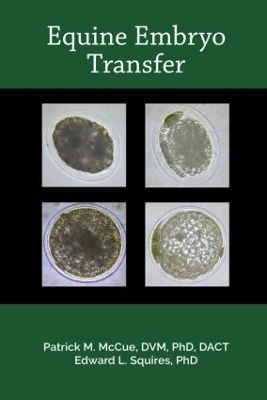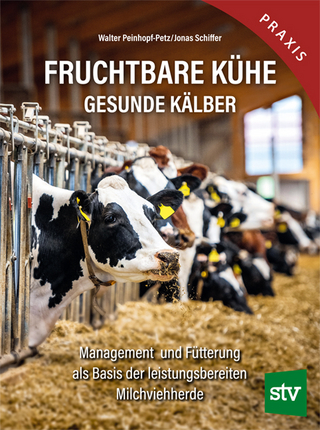
Equine Embryo Transfer
Teton NewMedia (Verlag)
978-1-59161-047-2 (ISBN)
Patrick M. McCue, Edward L. Squires
Contents 1. Introduction General Introduction (i.e. what is ET) Advantages and uses of embryo transfer Changes in the ET Industry Breed regulations (include a Table of most major breeds; ET, frozen embryos, etc.) Per cycle ET Success = Embryo Collection Rate (50-60%) x Embryo Transfer Pregnancy Rate (70-80%)Goals of the Manual 2. History of equine embryo transfer Livestock Horses Domestic horses as surrogates for endangered equids(?) 3. Reproductive Anatomy and Physiology of the MareAnatomy of the mare Physiology of the estrous cycle Physiology of early embryonic development and early pregnancy 4. Management of the donor mare Selection of the donor Evaluation of the donor (BSE)Management and Day of breeding (fresh, cooled, frozen semen) Palpation/ultrasound examinations relative to flush; daily vs every 6-8 hrs for frozen semen; BID if goal is to collect a small embryo at day 6.5 for cryopreservation Induction of ovulation (hCG and deslorelin) Donor mare management (PMIE, fluid, etc.)Estrous cycle control (Lights, P&E, PGF, hCG, Deslorelin, Regumate) Allow a mare to carry to term by approximately 10 years of age Allowing mare to carry own every 3-4 years Effect of repeated flushing on uterine health and embryo recovery # flushes per year recommendedFertility of mares after flushing (i.e. same season)Problem mares (i.e. PMIE, etc.) Maiden mares (young vs older)Post partum mares (i.e. flushing on foal heat) 5. SuperovulationHistoryTechniques EFSH Optimal follicle size at onset Problems - same stallion vs. goal of different stallions Not every mare responds to FSHPAF's and HAF's 6. Embryo Collection Equipment (Box Table) Facilities (stocks vs stall, etc.) Procedure; (incl. clean out and wash up) Ultrasound prior to flush in problem
| Erscheint lt. Verlag | 1.4.2015 |
|---|---|
| Zusatzinfo | 132 Illustrations, color |
| Verlagsort | Jackson |
| Sprache | englisch |
| Maße | 152 x 229 mm |
| Gewicht | 340 g |
| Themenwelt | Naturwissenschaften ► Biologie ► Zoologie |
| Veterinärmedizin ► Pferd | |
| Weitere Fachgebiete ► Land- / Forstwirtschaft / Fischerei | |
| ISBN-10 | 1-59161-047-8 / 1591610478 |
| ISBN-13 | 978-1-59161-047-2 / 9781591610472 |
| Zustand | Neuware |
| Haben Sie eine Frage zum Produkt? |
aus dem Bereich


